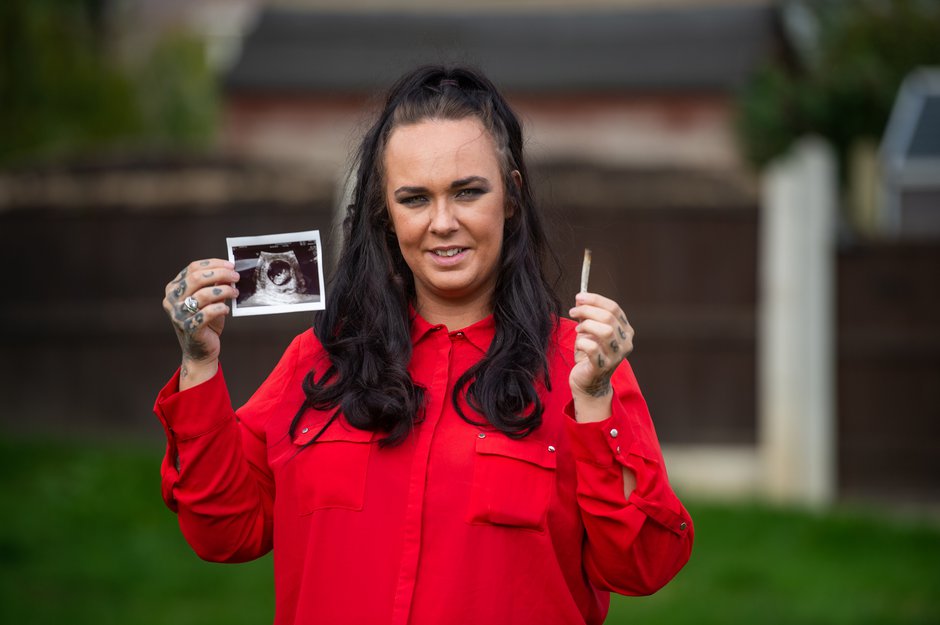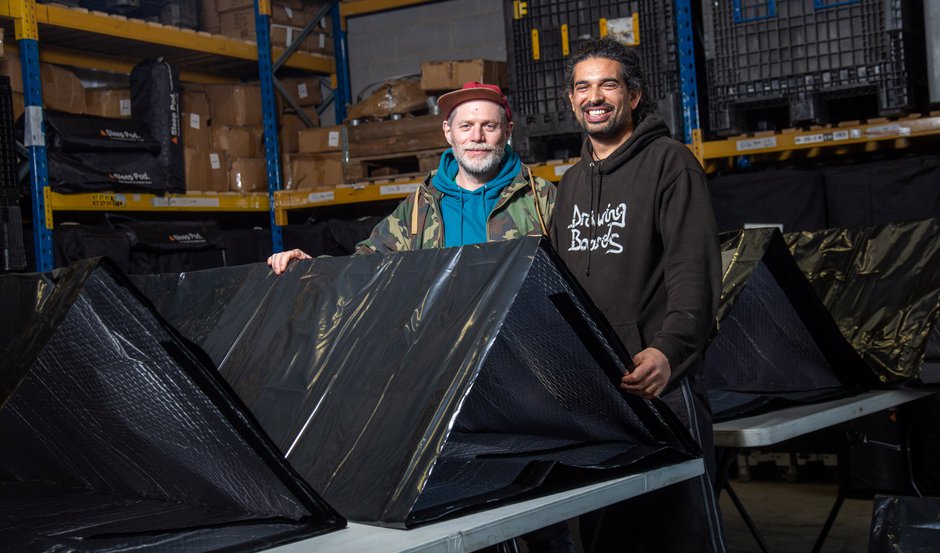This inspiring dog with dwarfism is stuck in perpetual puppy-hood
 Image by: Steve Chatterley
Image by: Steve Chatterley
These pictures show an inspiring dog with dwarfism - that is stuck in perpetual puppy-hood.
Ranger is two-year-old purebred AKC German Shepherd who has ‘Pituitary Dwarfism’.
It means he retains his puppy-like appearance much longer than is normal for his breed.
Ranger was diagnosed with the rare condition - which German Shepherds are predisposed to - after he contracted a parasite called Giardia.
After recovering from the infection his owners noticed Ranger wasn’t growing at the same rate a German Shepherd should.
They took him to their vet who surmised that little ranger may have the Pituitary Dwarfism mutation.
 Image by: Steve Chatterley
Image by: Steve Chatterley Image by: Steve Chatterley
Image by: Steve Chatterley Image by: Steve Chatterley
Image by: Steve Chatterley
As a side effect of his dwarfism the poor pup has contended with various health issues including shedding fur and flaky skin caused by hypothyroidism.
With the unconditional love of his owners and some help from his legion of online followers Ranger was able to get all the treatment he needed and has now made a full recovery from all his health issues.
Despite all the adversity this under-dog has never let any of it hold him back.
Ranger is happy and healthy and can be found playing the day away with his family and sisters or enjoying online fame and adoration as the star of his own Instagram page.
Ranger has been filmed performing his ‘signature’ head tilt and playing with his sisters Hazel the Labrador and fellow German Shepherd, Jessie.
Shelby Mayo who is Rangers guardian, said: “When we originally got Ranger from the breeder, he was smaller than all his other littermates, but we figured that was because he had a parasite called Coccidia.
“In the weeks following we took him home and he was parasite free but later on ended up getting a parasite called Giardia.
''At the same time, we also discovered that Ranger had a large infection on his neck.
“We were eventually able to get the infection under control, fast forward a few months later we were finally able to get rid of Giardia.
''During this time Ranger remained very small, the vet had suspected that he may have Pituitary Dwarfism, a genetic mutation
“But we were still sceptical as this condition is very rare.
''Over time Ranger still did not get much bigger, and at this point we are certain he does have this condition.
“After a few more months we got him neutered and that’s when we started to see big changes.
“He lost his appetite, started to lose weight, lost almost all of his fur, and had extremely dry and flaky skin.
''Many people on our Instagram page warned us that Pituitary Dwarfs can have many medical issues, but up until that point we hadn’t experienced any.
 Image by: Steve Chatterley
Image by: Steve Chatterley Image by: Steve Chatterley
Image by: Steve Chatterley Image by: Steve Chatterley
Image by: Steve Chatterley
One of our followers ‘Guardians Farm’ are a small company that makes handmade soaps, lotions, etc and they sent us goat milk soap, which ended up helping Rangers skin immensely.
“At the same time another one of our followers who also has a Dwarf German Shepard told us to get his thyroid levels checked as many dwarfs suffer from hypothyroidism.
“So our vet checked his thyroid levels and sure enough he was low, this can cause hair loss and a loss of appetite.
“After getting Ranger on Levothyroxine and using this soap his fur grew back and the dryness went away.
Rangers litter was the first litter that our breeder had bred those to specific dogs together.”
“We believe this was the cause of the genetic defect. And as a responsible breeder will not breed the two dogs together again.
''He healthy and happy as can be as of now and loves jumping around and playing with his ball and squeaky toys with his two sisters Hazel and Jessie”
You can keep up with the adventures of Ranger and his family by visiting his Instagram page @ranger_thegshepherd.
Video by: Ellis Wylam
'I'm A Celeb' star and aristocrat Lady C has been sacked from turning on the Christmas lights in Prince Charles' home town - after comments about Prince Andrew
 Image by: Jon Mills
Image by: Jon Mills
'I'm A Celeb' star and aristocrat Lady C has been sacked from turning on the Christmas lights in Prince Charles' home town - after comments about Prince Andrew.
Lady Colin Campbell had been set to appear at the switch-on in Tetbury, Glos., on December 6.
The posh market town is located right on the doorstep of Prince Charles' Highgrove House estate.
But the 70-year-old's appearance has now been pulled by furious organisers after she said 'soliciting sex was not the same as paedophilia'.
Appearing on ITV's Good Morning Britain yesterday (Tues), Lady C made the comment when discussing the scandal-hit Duke of York and disgraced billionaire Jeffrey Epstein.
 Image by: Jon Mills
Image by: Jon Mills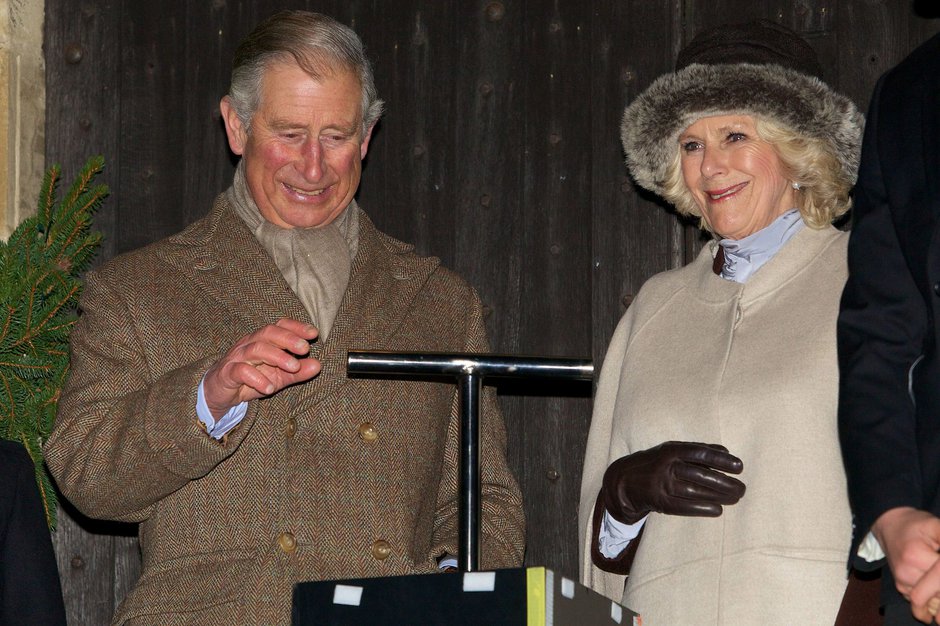 Image by: Jon Mills
Image by: Jon Mills
She said: "You all seem to have forgotten that Jeffrey Epstein, the offence with which he was charged and for which he was imprisoned, was for soliciting prostitution from minors.
"That is not the same thing as paedophilia."
A statement from Tetbury Town Council said: "The Town Council has been advised by the organisers of the Christmas Lights Switch on Event that, in view of the recent controversy, they have decided to ask the Mayor to turn on the Christmas Lights, with a pupil from St Mary’s Primary School."
The posh personality appeared on the fifteenth series of 'I'm A Celebrity...Get Me Out Of Here!', quitting the show on 'medical grounds'.
She is no stranger to controversy, having claimed earlier this year that the #MeToo movement has "prevented men from being men".
Highgrove House, the family residence of the Prince of Wales and the Duchess of Cornwall, is located just two miles from the centre of the town.
RUFF RIDER - Meet the real Hairy Biker ...Rocket the motorcycle dog
 Image by: Chance McBride
Image by: Chance McBride
Rocket the dog loves nothing more than motorcycle cruising on the open road - perched on the shoulders of his owner.
The three-year-old Shiba Inu - named after a character from ‘Guardians Of The Galaxy’ - began riding with owner Chance McBride when he was just five months old.
He now rides on Chance's back in a special rucksack for carrying dogs, or rides pillion in a bespoke pet seat.
Chance, of Phoenix, Arizona, said: "I started training Rocket when he was 5 months old to ride the motorcycle.
"I put a towel on my gas tank and used a leash tied around my waist latching it to Rocket's harness.
"We would do small rides around the neighborhood. We did this on the weekends for a few weeks and he loved it so I bought him a 'Kuryakyn Pet Palace'.
"It's a great carrier that is meant for dogs and motorcycles."
Chance got Rocket after suffering a Traumatic Head Injury (TBI) three years ago.
 Image by: Chance McBride
Image by: Chance McBride Image by: Chance McBride
Image by: Chance McBride Image by: Chance McBride
Image by: Chance McBride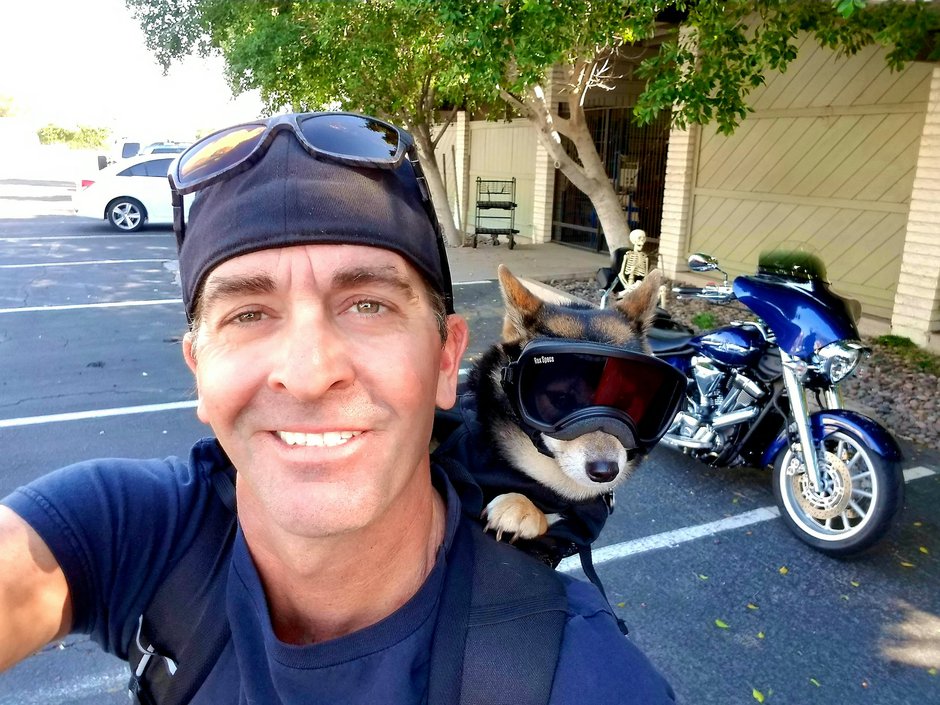 Image by: Chance McBride
Image by: Chance McBride
He explained: “I’m not good with people after my TBI so I would go on rides by myself a lot.
"My wife and I moved to Arizona from Colorado so all my friends and family were miles away while I was dealing with my TBI.
"Getting Rocket was a great emotional help, he and I are very close and he helps me with my TBI issues.
"I love spending time with him and riding motorcycles, so we ride pretty much everywhere together.
"I have met a lot of people at gas stations, stores, and even at red lights due to Rocket, he is a great ice breaker.
“I love to see rocket enjoying riding as much as I do. No matter how bad my day is he can make me smile.”
The pair have even completed a 2,600-mile ride from Arizona through New Mexico, Colorado and Utah which took two-and-a-half weeks.
Chance added: “I now have a K9 Sports sack for him so I can easily take him with me running errands or to just get out for a bit.
"My wife now can ride with us on the bike when I use the sport sack. And now a friend their family has moved to Arizona so we all get to go riding together.”
Video by: Gabriella Petty
A blue whale's heart can beat just twice a minute when it's diving for food - up to 50 percent slower than what was thought possible, according to new research.
 Image by: Matthew Newby SWNS
Image by: Matthew Newby SWNS
A blue whale's heart can beat just twice a minute when it's diving for food - up to 50 percent slower than what was thought possible, according to new research.
Scientists have recorded the legendary beast's huge organ for the first time in the wild.
They placed a lunch-box sized suction cap on one of them as it swam in California's Monterey Bay.
Electronic sensors inside the neon orange plastic shell revealed how its pulse slows and quickens during diving, feeding and surfacing.
The rate ranges from between two and 37 beats a minute - depending on whether the world's largest creature is underwater or at the surface.
To put this in perspective a normal resting heart rate for an adult human ranges from 60 to 100 beats per minute.
The findings published in Proceedings of the National Academy of Sciences could help save the endangered blue whale - the largest creature to have ever lived.
They show blue whale hearts are operating at extremes limiting the whale's size - and explaining why there's no animal bigger.
About the size of a small car, it weighs around 440lbs - almost a quarter of a ton. The beat can be heard from over two miles away - pumping out 2210 litres of blood each time.
Lead author Professor Jeremy Goldbogen, a biologist at Stanford University, said: "We had no idea this would work and we were sceptical even when we saw the initial data.
"With a very keen eye, Paul Ponganis - our collaborator from the Scripps Institution of Oceanography - found the first heart beats in the data.
"There were a lot of high fives and victory laps around the lab."
Some unusual features might help it perform at these extraordinary margins - adding to our fundamental knowledge of biology and informing conservation efforts.
Blue whales face threats from boats, fishing, man-made noise, pollution and climate change reducing krill - a key food.
Prof Goldbogen said: "Animals that are operating at physiological extremes can help us understand biological limits to size.
"They may also be particularly susceptible to changes in their environment that could affect their food supply.
"Therefore, these studies may have important implications for the conservation and management of endangered species like blue whales."
A decade ago Prof Goldbogen and Dr Ponganis measured the heart rates of diving emperor penguins in Antarctica. They had wondered ever since if the same feat could be achieved with whales.
Prof Goldbogen said: "I honestly thought it was a long shot because we had to get so many things right: finding a blue whale, getting the tag in just the right location on the whale, good contact with the whale's skin and, of course, making sure the tag is working and recording data."
The tag performed well on smaller, captive whales, but getting it near a wild blue whale's heart is a different task.
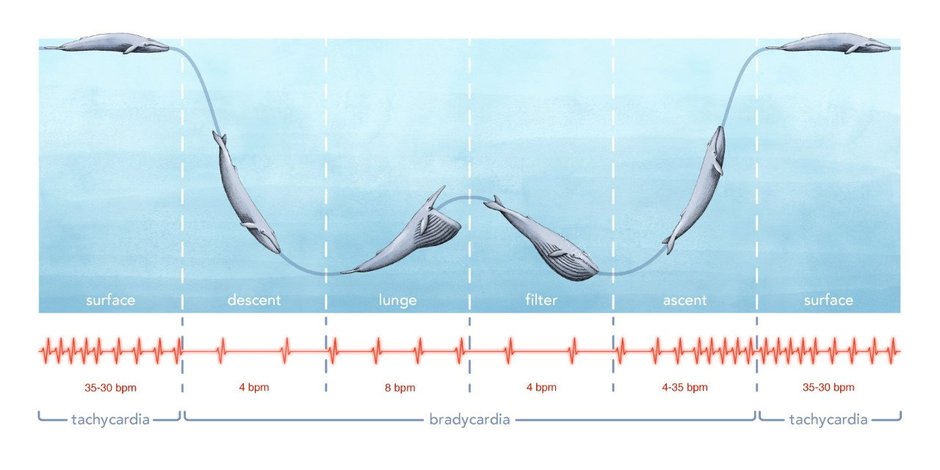 Image by: Matthew Newby SWNS
Image by: Matthew Newby SWNS
For one thing, wild whales aren't trained to flip belly-up. For another, blue whales have accordion-like skin on their underside that expands during feeding - and one such gulp could pop the tag right off.
Co author Dr David Cade, a member of the Goldbogen Lab who placed the tag on the whale, said: "We had to put these tags out without really knowing whether or not they were going to work. The only way to do it was to try it. So we did our best."
He stuck it on at the very first attempt. Over time it slid into a position near the flipper where it could pick up the heart's signals. The data it captured showed striking extremes.
When the whale dived its heart rate slowed reaching an average minimum of four to eight beats per minute - with a low of two.
At the bottom of a foraging dive, where the whale lunged and consumed prey, it increased about two-and-a-half times - then slowly fell again.
Once the whale got its fill and began to surface, its heart rate rose. The highest - 25 to 37 beats per minute - occurred at the surface where the whale was breathing and restoring its oxygen levels.
The results shocked the team. The whale's highest heart rate almost outpaced predictions - while the lowest was 30 to 50 percent below what was expected.
The researchers think the surprisingly low heart rate may be explained by a stretchy aortic arch - part of the heart that moves blood out to the body.
In the blue whale, it slowly contracts to maintain some additional blood flow in between beats.
Meanwhile, the impressively high rates may depend on subtleties in the heart's movement and shape that prevent the pressure waves of each beat from disrupting blood flow.
Looking at the big picture, the whale's heart is thought to be performing near its limits.
It sheds light on why no animal has ever been larger - as the energy needs would outpace what the heart can sustain.
The magnificent marine mammals rule the oceans at up to 100 feet long and upwards of 200 tons. Their tongues alone can weigh as much as an elephant.
The researchers are now adding more devices to the tag including an accelerometer, which could help them better understand how different activities affect heart rate.
They also want to try their tag on other members of the rorqual whale group, such as fin whales, humpbacks and minke whales.
Dr Cade said: "A lot of what we do involves new technology and a lot of it relies on new ideas, new methods and new approaches.
"We're always looking to push the boundaries of how we can learn about these animals."
Video by: Gabriella Petty
A 'social' robot recently on the cover of Time Magazine held BINGO lessons for OAPs in a care home
 Image by: Jon Mills
Image by: Jon Mills
This is the hilarious moment a 'social' robot recently on the cover of Time Magazine held BINGO lessons for OAPs in a care home.
Stevie the robot was designed to keep people company and is so advanced he was named one of the inventions of 2019.
Now the robot designed by a team from Trinity College Dublin, Ireland, has visited Reflections day centre in Camborne, Cornwall.
He has already been keeping the elderly company and hosting bingo sessions to keep the residents entertained.
Recently back from a visit to the States, Stevie has been placed into the care of experts from the University of Plymouth’s Centre for Health Technology.
Dr Conor McGinn, assistant professor at Trinity College Dublin, said: “This pilot is the start of an exciting new relationship with the University of Plymouth.
"Two things particularly excite me: a chance to link up with Plymouth in the field of robotics, and the potential to test Stevie in Plymouth and Cornwall for his very first UK pilot.”
"The aim with Stevie was to create something that empowers people to use it, whether that is service users or patients.
"We want people to like Stevie, and so he is deliberately not intimidating and non-judgmental. "
His creators describe Stevie as “the world's most advanced social robot”, and he has recently been named among Time’s 100 best inventions of 2019.
Dr McGinn continued: "People have a very subtle ability to pick up social clues, so he has to be really finely tuned.
"We haven’t had anyone who hates him yet, although some take longer than others to get used to him.
“Some older people actually find it easier to open up and talk to a robot than a person.
"Running a game of bingo might seem frivolous, but if he can increase happiness and reduce loneliness, both of which have significant health implications, Stevie will be proving his value.”
 Image by: Steve Chatterley
Image by: Steve Chatterley Image by: Jon Mills
Image by: Jon Mills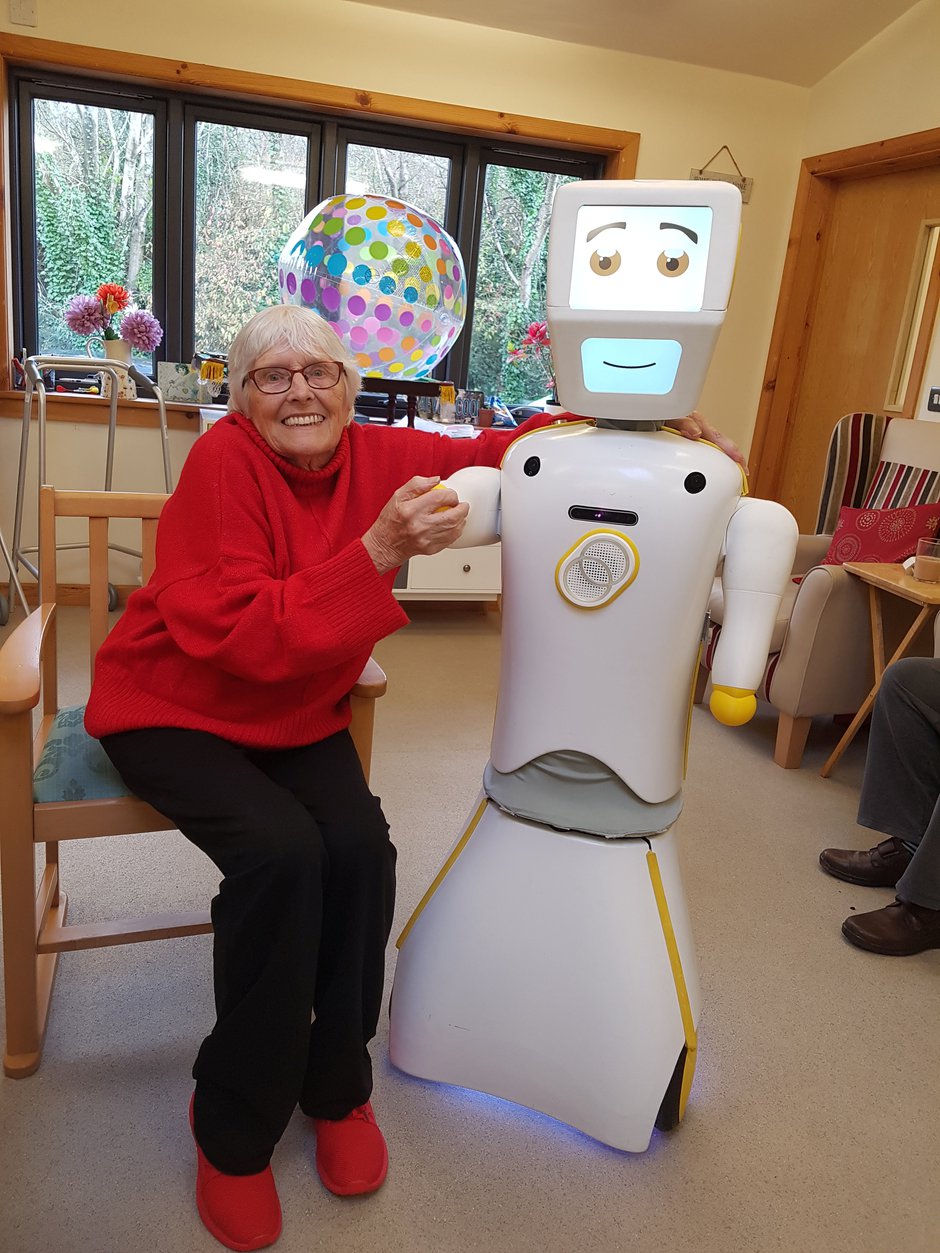 Image by: Jon Mills
Image by: Jon Mills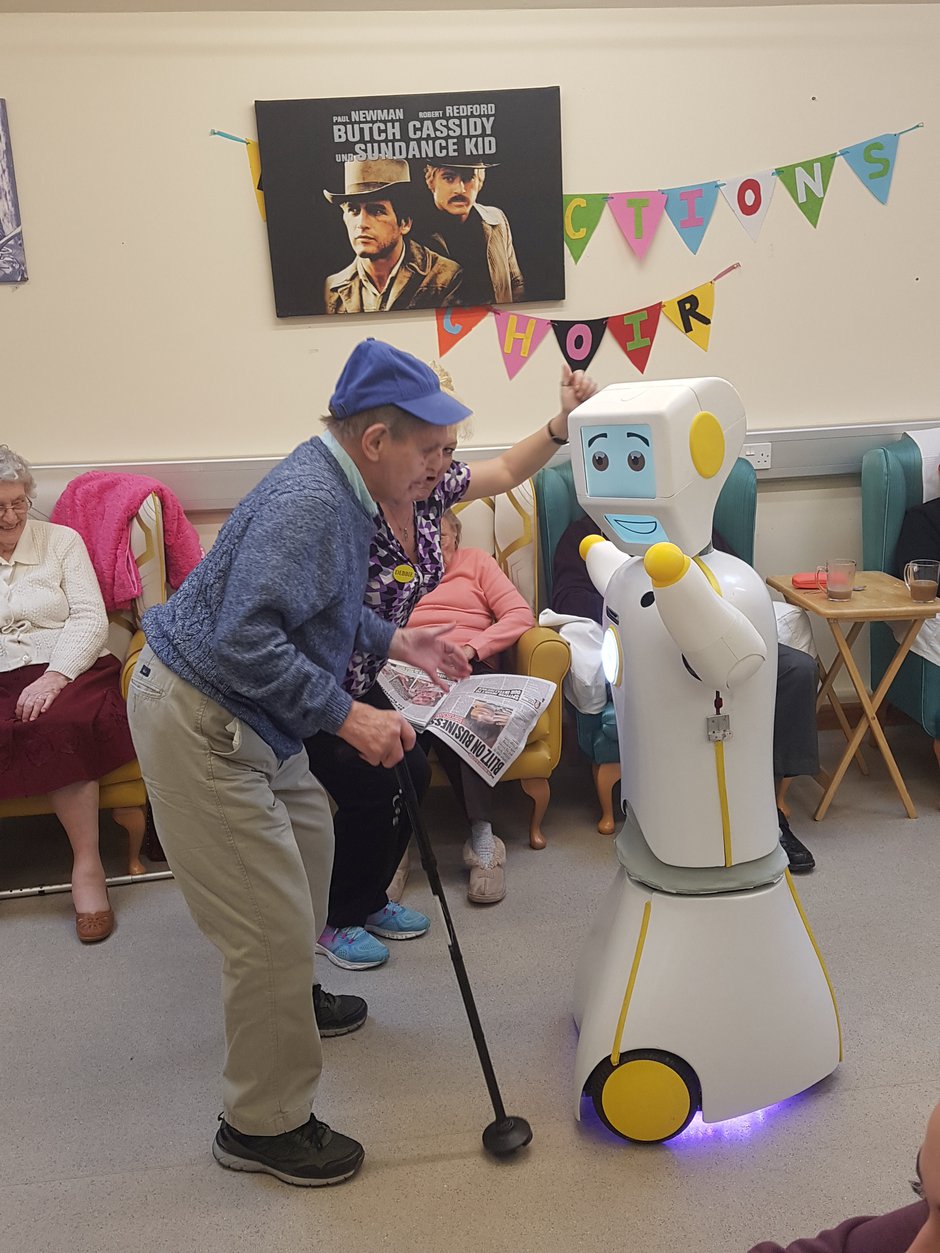 Image by: Jon Mills
Image by: Jon Mills
During the two weeks Stevie is spending at Reflections, he will carry out a range of activities - including leading a game of bingo.
He will also spend time with clients of the centre, and researchers will monitor his performance and gather feedback from staff.
And Stevie is already proving a hit.
A spokesperson for the care home said: "He has arrived at Reflections. His 1st shift was a success and we are all looking forward to having his help and company over next 2 weeks.
"He has been taking a group for musical bingo, dancing and falling in love. All in a days work for Stevie."
A key test will be whether Stevie can successfully keep people engaged.
It is hoped Stevie’s presence will boost wellbeing and social interaction, while freeing up human staff to work with individuals needing more attention.
Researchers from two EU-funded projects in the Centre for Health Technology are involved with the Stevie trial.
Professor Ray Jones leads the eHealth Productivity and Innovation in Cornwall and the Isles of Scilly (EPIC) project.
Professor Jones said: “It is an honour to have hosted Stevie at the University and to work with him in a care setting, and it shows the idea of ‘Testbed Cornwall’ already has the clout to attract world-leading technology.
“However, Conor and his team are only one of the many we are helping to test ideas, products and technology in Cornwall.
"EPIC aims to develop and use eHealth – things like websites and apps as well as robots – to improve health and wellbeing in Cornwall.
"In addition, we want to create highly skilled jobs in Cornwall to boost the economy.”
Video by: Ashley Moran
Pregnant mum suffering from the same extreme morning sickness as Kate Middleton claims she has cured her chronic vomiting by smoking CANNABIS
 Image by: Dan Rowlands SWNS
Image by: Dan Rowlands SWNS
A pregnant mum suffering from the same extreme morning sickness as Kate Middleton claims she has cured her chronic vomiting by - smoking CANNABIS.
Sammy Warnes, 30, said her hyperemesis gravidarum was so bad when she was ten weeks pregnant with daughter Arabella, now three, she considered an abortion.
Strong medication from her doctor didn't work, so she turned to cannabis, having a puff or two on a joint, until the symptoms disappeared at 25 weeks.
She said her daughter was born fit and healthy, so when she experienced the same symptoms with her current pregnancy, she once again ignored expert advice.
Now 15-weeks pregnant with her second child, Sammy said she she has had no choice but to resort to smoking cannabis a few times a week to alleviate her symptoms.
She spends £10 every three weeks, and gets her supply from the internet.
Former catering worker Sammy said she got the idea after she came across an online forum about severe morning sickness which included messages from other mums-to-be using the Class B drug.
Sammy, from Leeds, said: "The thing is the prescription drugs do more damage.
"There's risk of birth defects so they're quite scary to be fair.
"One of them was making my body do random movements. That stuff panics me.
"It's actually saved both me and my baby's life.
"This time round has been ten times worse.
"I've had to give my job up because I just couldn't do anything.
"With just two puffs I'm able to be a parent to my daughter.
"I only do it a few times a week.
"I can do normal things like go to the shops, take her to nursery and just be a mum.
"Beforehand I was just being sick or waiting around to be sick.
"I was just knackered.
"People will say 'Oh she just wants to be a druggie' but it's not that at all.
"But I don't get high off it.
"It's a couple of puffs with a minimum bit of baccy.
"There needs to be a conversation about this so other women know there's something out there that can help them.
"Unless you've been through it you don't really get it."
After experimenting with cannabis a couple of times in her teenage years, Sammy decided to use the drug again when she was ten weeks pregnant with her third child in 2015.
Doctors had prescribed her Domperidone - a drug is used to relieve nausea and vomiting - but she claims the symptoms only temporarily disappeared for 20 minutes.
After weeks of sleepless nights and chronic vomiting, she decided to Google any alternative ways to combat her illness.
She discovered several forums suggesting cannabis as a solution, she claims.
She said: "I decided to do my own bit of research.
"It was all getting too much.
"I wanted to see if there were any old-wives tales or 'old fashioned tips' that would help me out.
"Then I found quite a few forums on women using cannabis to stop their morning sickness.
"I was so desperate I thought I'd give it a go.
"I was a bit nervous when I first did it but I was reassured by all the things I read on the forums.
"I think anyone would be at first.
"It was to medicate my body, not to get stoned.
"I'm not abusing it or trying to get blazed.
"Some days I have good days and don't need it.
"Other days I am throwing my guts up and need a couple of puffs.
"I got some a few days later and as soon as I took it the symptoms just went away.
"It wasn't just a case of me feeling sick the whole time. I couldn't do anything at all.
"It was amazing - it helped me get out of bed in the morning.
"It literally worked straight away.
"I just couldn't believe it.
"I didn't tell my midwife as to be honest I didn't want to cause unnecessary stress."
 Image by: Dan Rowlands SWNS
Image by: Dan Rowlands SWNS Image by: Dan Rowlands SWNS
Image by: Dan Rowlands SWNS Image by: Dan Rowlands SWNS
Image by: Dan Rowlands SWNS
NHS guidelines say using cannabis regularly during pregnancy could affect a baby's brain development and smoking with tobacco increases the risk of the baby being born small or premature.
But Sammy claims her daughter, who arrived in June 2016, weighing a healthy 6lb 2oz, is healthy both mentally and physically", and she stopped taking the drug,
After discovering she was pregnant again in August this year, Sammy was hoping her chronic morning sickness wouldn't make a return.
But she returned to her doctors to complain her hyperemesis gravidarum had returned when she was six weeks pregnant and she was signed off work.
Sammy said: "I was put on the tables again but the same thing happened.
"The sickness would disappear for about 20 minutes but then I'll be back to hugging the toilet all day.
"I've had no choice but to take it.
"It worked so well last time.
"This time the sickness was ten times worse and I was considering having a termination."
Despite the taboo surrounding smoking cannabis, Sammy said she has both the support of her friends and family.
She said: "I smoke it in my back garden in the mornings.
"My family are very anti-drugs and when I told them they initially kicked off.
"But when I told them the full story, they were like 'if it works for you that's fine'.
"My partner is really supportive. He noticed the difference straight away.
"My half-siblings are supportive too. They have family members who use it to treat cerebral palsy and cancer.
"I've never told a midwife because I know I'll get stick."
"Now I can do a food shop, do the house cleaning and take my little girl to nursery," she said.
"When you can't do that and you have that extreme sickness it's just awful.
"The tablets have side effects of birth defects. That is known.
"My little girl is fit and healthy and is getting along fine at nursery.
"I'd rather just take a couple of puffs of weed.
"There are thousands of women doing the same.
"But there isn't a conversation about it because they are scared their midwives will grass them up to social services.
"I want to speak out because there is something out there which can help other women.
"There's chat about cannabis being used as medicine for chronic illnesses.
"I just want to help and tell other women."
As many as eight in every ten women experiencing morning sickness as a side effect of pregnancy with symptoms improving or disappearing around 14 weeks.
But those who experience hyperemesis gravidarum can see symptoms last for half fo their pregnancy.
NHS guidelines advise those who experience severe symptoms to contact their midwife, doctor or hospital to seek treatment.
Sammy and partner Gav, 32, are expected to welcome their first child together in May 2020.
Watch incredible moment boy told he'd never walk gave a huge grin when he toddled into nursery for the very first time.
 Image by: Rielle Chapple
Image by: Rielle Chapple
A four-year-old boy told he'd never walk gave a huge grin when he toddled into nursery for the very first time - after his parents saved for his entire life to pay for an operation.
Bleu Greenwood was born with the most restrictive type of cerebral palsy and his parents were told he'd never walk alone.
But they refused to give up, and spent his entire life scrimping and saving £10,000 for a private operation which he had this summer.
And after months of intensive therapy he had his teachers in floods of tears when he walked into nursery on his own two feet for the first time, earlier this month.
With a huge cheeky grin on his face, the little lad padded into school using his walker - taking steps doctors never thought were possible.
Proud parents Rielle Chapple, 27, and Dale Greenwood, 28, said it was the best feeling in the world.
Former restaurant manager and now full time carer Rielle, from Leicester, said: "It was the most emotional moment of my life.
“It was so lovely and overwhelming to see because we never ever thought it would happen.
“It just shows how determined he is and we are so proud of him.
“We all had a massive celebration when he did walk for the first time.
"Everyone was crying because it was such a happy moment.
“And you could see how happy it made him.”
Bleu's twin died during pregnancy but he was born on August 27, 2015 at Leicester Royal Infirmary and Rielle said she had no idea he was suffering from any problems.
But Rielle, who is currently three months pregnant, said it became clear “something wasn’t right” a few hours after birth.
She said: “He was doing weird jerking movements and I knew something was wrong.
“Then when he was 10 days old he started having seizures.
“By the time he got to four months he wasn’t hitting any milestones and that’s when we got the diagnosis.
“They said it was the most severe case of cerebral palsy and said he’d never be able to talk.
“But they also said even with surgery he’d never walk."
Bleu's has stage five cerebral palsy - the kind with the most limited movement - so was not eligible for an operation on the NHS.
But his parents refused to take no for an answer and started fundraising when he was just ten months old.
They finally raised £10,000 so he could have selective dorsal rhizotomy surgery privately in June.
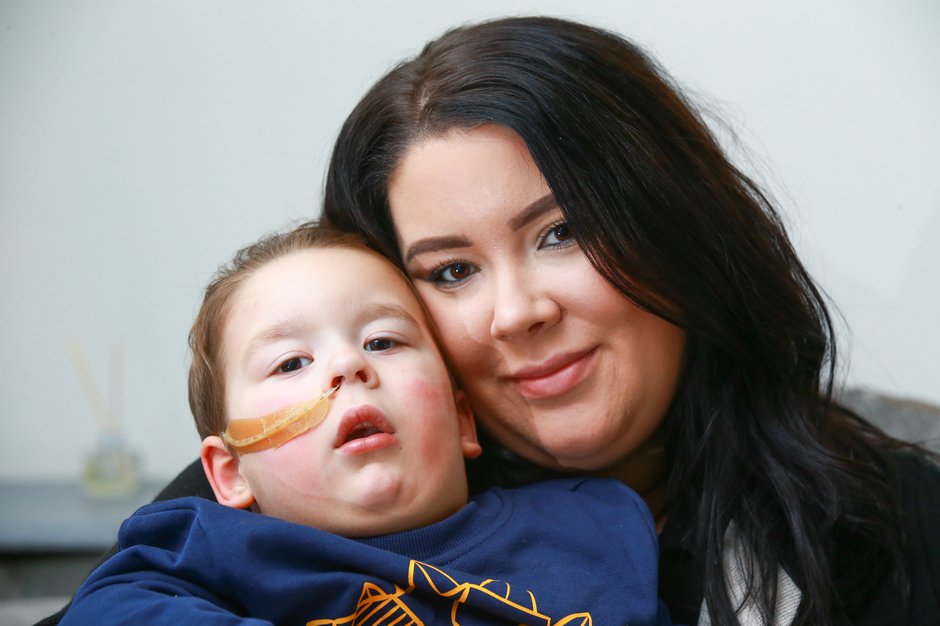 Image by: Tom Maddick SWNS
Image by: Tom Maddick SWNS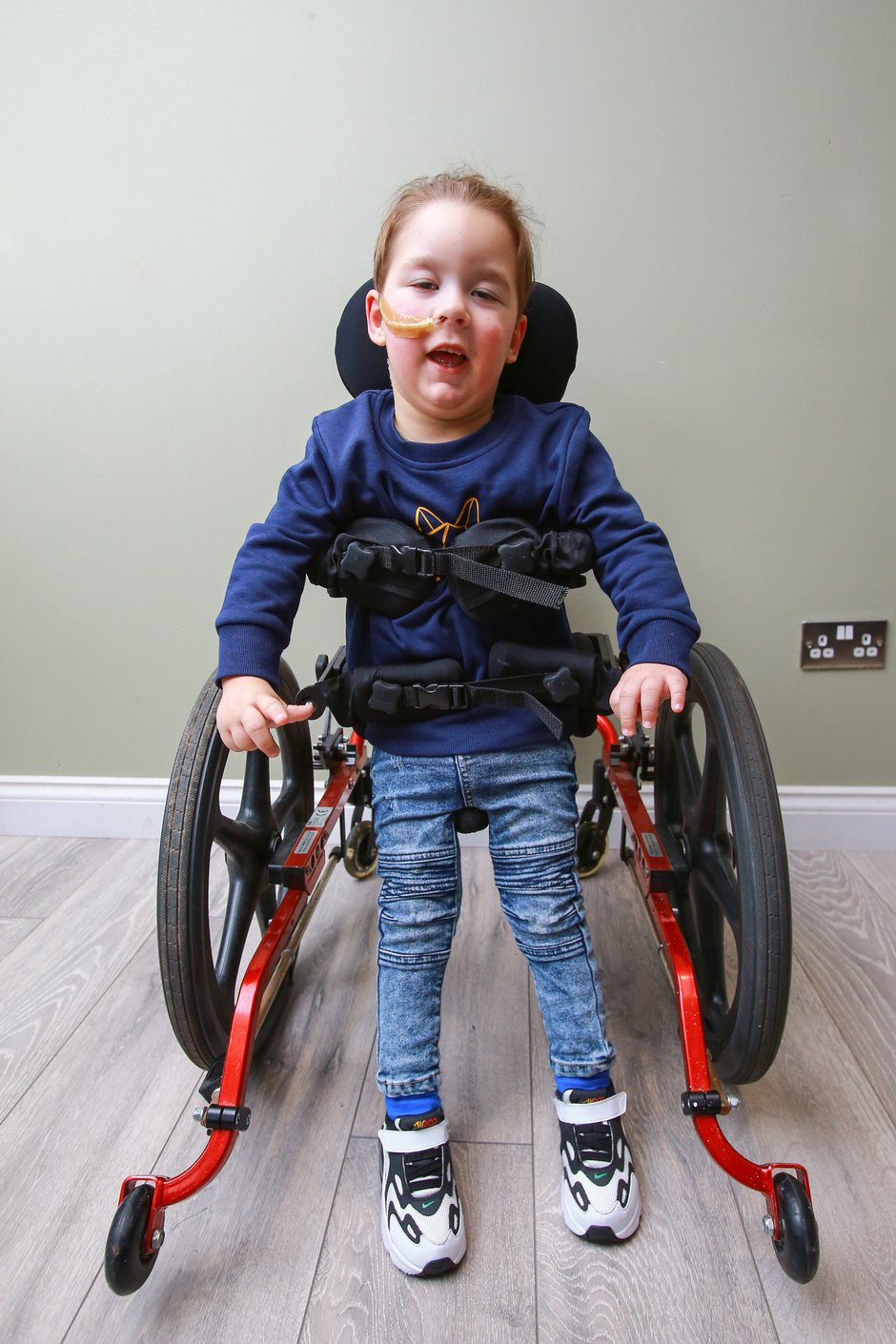 Image by: Tom Maddick SWNS
Image by: Tom Maddick SWNS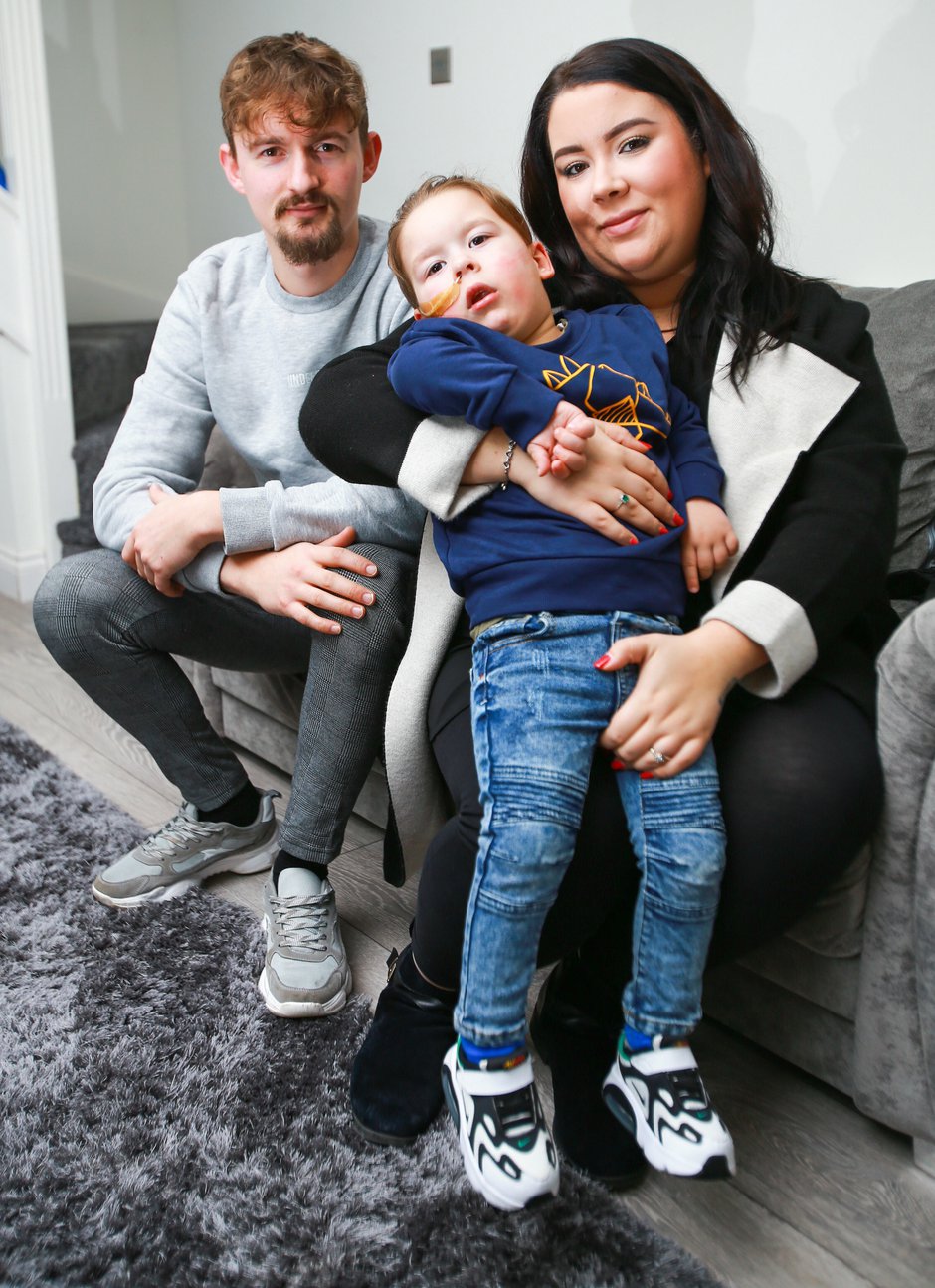 Image by: Tom Maddick SWNS
Image by: Tom Maddick SWNS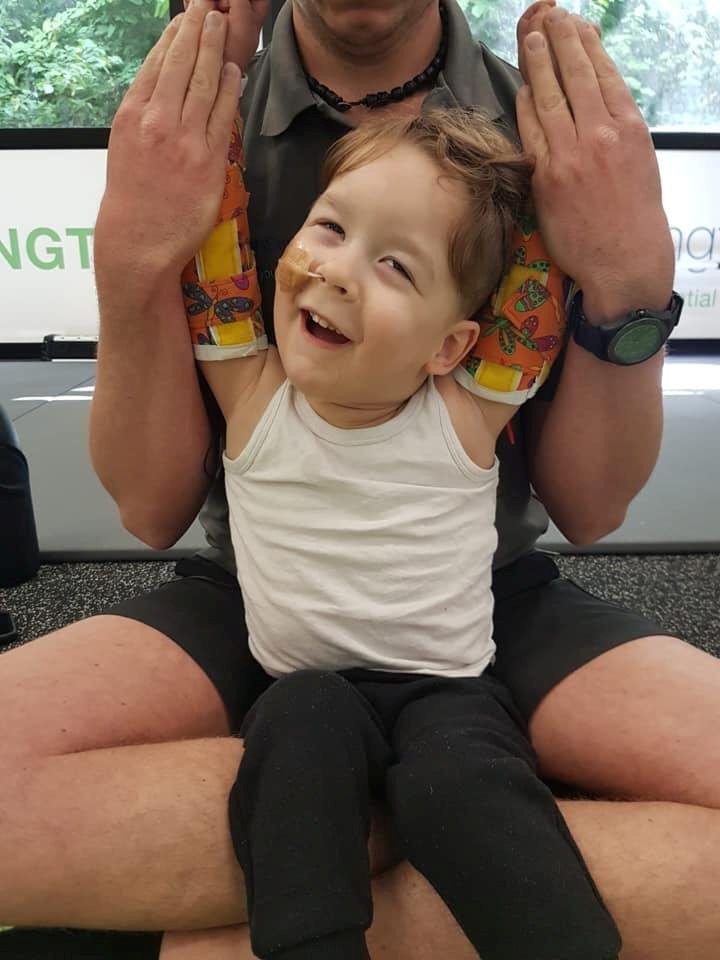 Image by: Rielle Chapple
Image by: Rielle Chapple Image by: Rielle Chapple
Image by: Rielle Chapple
The operation at Nottingham’s Queen’s Medical Centre saw surgeons cut the nerve rootlets in his spinal cord which were sending abnormal signals to his muscles, causing them to contract and stiffen.
Rielle said: "We wanted to do anything we could to help him.
"We have fundraised for this operation his whole life, but it is only really beneficial to him if it is followed by intense therapy."
Post-op Bleu travelled all over the UK for intense physiotherapy sessions, costing £90 an hour.
And after five months of sessions, Bleu was finally able to take his first steps in the park using his walker, on November 13.
A day later he dazzled his friends and teachers at Wigston Menphys Nursery School by walking into school.
Rielle said: “He has made so much progress since surgery and has improved massively.
“He has no pain now and is on a really good path moving forwards.
“We will try to get the best out of him, for his sake.”
His great strides come despite him being hospitalised for infections and breathing difficulties in January.
At the time Rielle and catering manager Dale were told to “prepare for the worst”.
But little Bleu, who has also battled pneumonia, staphylococcus infection and sepsis twice, pulled through.
Bleu’s parents aren’t sure what the future holds.
Rielle said: “He is very severe and does have a shortened life expectancy.
“For us we just want to make him as happy as we can for as long as we can. I want to make him smile as much as we can.
“The operation has made him more independent and has improved his quality of life massively.”
Rielle and Dale are constantly fundraising to help pay for expensive medical and physiotherapy bills.
https://just4children.org/children-helped2018/bleus-journey/
Video by: Rielle Chapple
RADIO HO HO! - Christmas-mad barrister splashes out £5,000 creating festive light and music display outside his home which drivers can enjoy by tuning their radios into his sound system
 Image by: Adam Hughes SWNS
Image by: Adam Hughes SWNS
A Christmas-mad barrister has spent £5,000 creating a spectacular festive light display outside his home to flash in time to music from his own radio station which drivers can tune into.
Nick Wright, 47, spent several hours a day for four weeks setting up his amazing musical winter wonderland outside his detached property.
But programming each of the 2,000 lights on the house, each individually controlled by a computer network, took the dedicated homeowner three months of hard work.
The now align perfectly with a playlist of 14 Christmas classics, that have a rock style twist, and can be heard from the street in Stourport-upon-Severn, Worcs.
Drivers passing by can even tune their car radios into a designated frequency - 88.9fm - and enjoy the dazzling Yuletide lights show in a more immersive way.
Nick says he has spent around £5,000 importing various lights and gadgets from the United States and China over the past year to construct his Christmas rock show.
He said: “I always do Christmas lights on the outside of my house but this year I decided to do something a bit different.
“I've got a thing called a space flower light which is like a three kilowatt light that you can see from five miles away.
“It's like one of those from the 20th Century Fox Film adverts. There’s a lighting company in the United States and, every year, I always look at their stuff but it's not cheap.
“So that's why I thought this year, I'll give it a go and see what happens.
“I had eight boxes sent over from the United States, which helpfully doesn't come with any instructions, but I used online forums to figure out how they work.
"When I first got into it, I thought I'd bitten off more than I could chew, but it's effectively a computer network with various controllers that you daisy chain together.
“They work the lights and you can then programme them to music. That's the easy part, connecting it all up.
"Sequencing the song is the tricky part as each light is individually configured.
"It took me around five hours to do 10 seconds of a song, but now that it's done it looks really cool."
As well as lights around the windows and doors, Nick's home is decorated with light-up snowflakes and Christmas trees - all of which are colour-changing.
 Image by: Adam Hughes SWNS
Image by: Adam Hughes SWNS Image by: Adam Hughes SWNS
Image by: Adam Hughes SWNS Image by: Adam Hughes SWNS
Image by: Adam Hughes SWNS Image by: Adam Hughes SWNS
Image by: Adam Hughes SWNS Image by: Adam Hughes SWNS
Image by: Adam Hughes SWNS
Asked how his neighbours have responded to the display, Nick said: “It's not particularly loud so I don't think they mind. I've only got them on between 5pm and 9pm.
“I've definitely noticed more people this year stopping and staring in the street.
“My one next-door neighbour, he's out every night and he's always filming it.”
Despite having no engineering training, Nick’s dad Paul was a big help in assembling the display.
Nick added: “My Dad is very good at knowing what to do.
“The arches you can see are slightly different because they've actually got LED strips in as opposed to pixels.
“The arches are two metres long and they come straight so I had to find some way to bend them in half to make it an arch.
“Dad came up with the idea of filling them with hot water and we literally bent them over when the plastic softened.
“He is very good at stuff like that, my dad.”
It doesn’t even cost all that much to put on, according to Nick, despite all the hardware involved.
He said: “Because it's all LED and all pixels, it's costs less than a hairdryer to run really. Even though it's 2000 pixels.
“It's something ridiculous like a quarter of a watt per bulb or something. It's really, really low.
“They are all data jammed in and all run off various extensions, but when it was all on, I went down into the garage to check out the meter and it really wasn't going that fast at all.
“Next year I'll probably do something for a Severn Valley Railway trust, who I volunteer for, and the train line is just down the road from me.
“This year I just wanted to get it right just to see if I could do it. Next year, I will put a collection box out the front and do it for a charity.”
Video by: Ashley Moran
This is the moment a real-life 'Iron Man' showcased his jetpack technology to American military teams
 Image by: Ben Philipson
Image by: Ben Philipson
This is the moment a real-life 'Iron Man' showcased his jetpack technology to American military defence teams.
Richard Browning, a former Royal Marines Reservist, is seen whizzing round the Royal Navy’s new aircraft carrier HMS Queen Elizabeth.
The fully functioning ‘Jet Suit’ developed by Gravity Industries is powered by cutting-edge technology and makes human flight a reality.
Richard, Founder and Chief Pilot of Gravity Industries, travelled to Annapolis, home of the United States Naval Academy to play host to the ‘Atlantic Future Forum’.
There were a series of events on board the vessel, aimed at bringing together the military leadership and great minds from a host of nations to discuss the future of Defense capability
As a beacon of UK innovation in this space, Gravity Industries was invited by the Royal Navy and British Embassy to support the two days celebrating British Trade and Innovation, by demonstrating multiple Jet Suit flights to innovators, business leaders and senior military representatives from the UK and US.
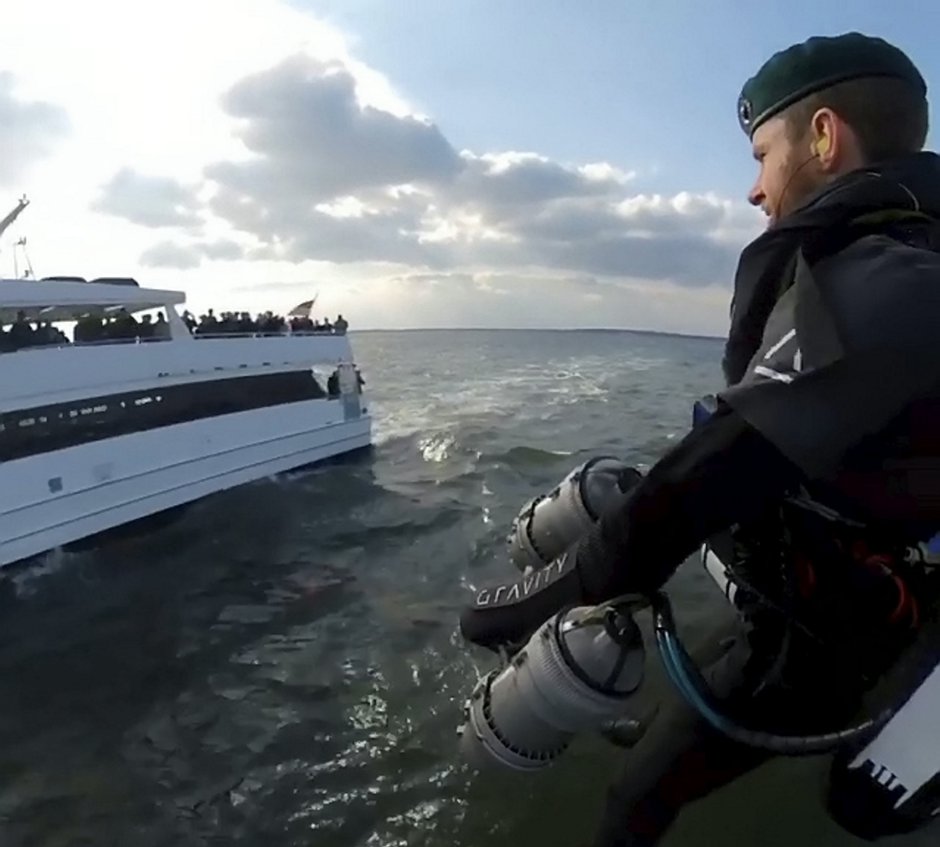 Image by: Ben Philipson
Image by: Ben Philipson Image by: Ben Philipson
Image by: Ben Philipson Image by: Ben Philipson
Image by: Ben Philipson
Richard can be seen leaving the HMS Queen Elizabeth and hurtling across the ocean to spin around a boat full of amazed US investors.
As the founder of Gravity Industries, Richard leads a team that also designs and builds the Jet Suits.
He recently more than doubled his own world record, achieving a speed of more than of 85 mph: he now holds the Guinness World Record for “fastest speed in a jet engine powered suit”.
Richard said: ‘We were honored to be invited to support this year’s Atlantic Future Forum and demonstrate the capabilities of Gravity’s jet engine powered suit to this audience”
“We are passionate about supporting UK PLC, Trade and Innovation and our work with the Royal Navy is part of an ongoing programme of exploration and demonstration of our tactical mobility capability.”
“This exploration is alongside our core focus which is scaling more than 90+ events across 30 countries, into becoming an international Race Series.”
Video by: Ben Philipson
Hundreds of rough sleepers in Britain are to be given ''pioneering pods'' this Christmas - previously used in the 'Calais Jungle'
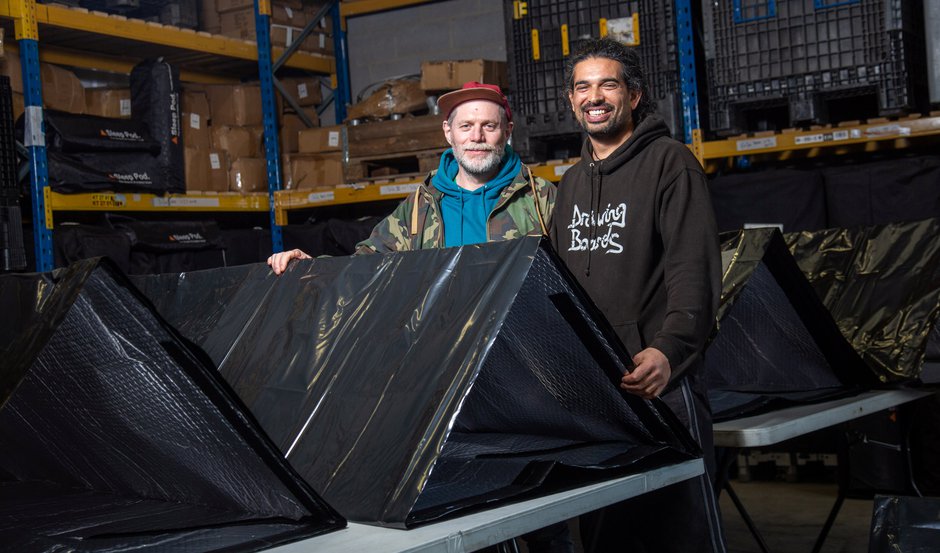 Image by: Tom Wren SWNS
Image by: Tom Wren SWNS
Hundreds of rough sleepers in Britain are to be given ''pioneering pods'' this Christmas - previously used in the 'Calais Jungle'.
More than £10,000 has been raised for the groundbreaking initiative, which is being rolled out across Bristol, Bath and Weston-super-Mare.
The lifesaving 'Sleep Pods' were originally made to help refugees in Europe and cost roughly £25 each.
But 400 are being brought to the South West as part of a project aimed at battling homelessness and are set to be distributed next month.
The cash for the designs has been raised through a sold-out music event titled 'Give a S*** Xmas', featuring the band IDLES and Geoff Barrow, member of Portishead.
Local statistics estimate that 85 people a night sleep on the streets of Bristol alone - with recent reports showing homeless people in the city are dying at twice the national rate.
Homelessness in general has risen in the UK by more than 165% in the last decade with 726 people dying in 2018 - a 20% increase on the year before.
Volunteers are now being sought to help build and distribute the pods.
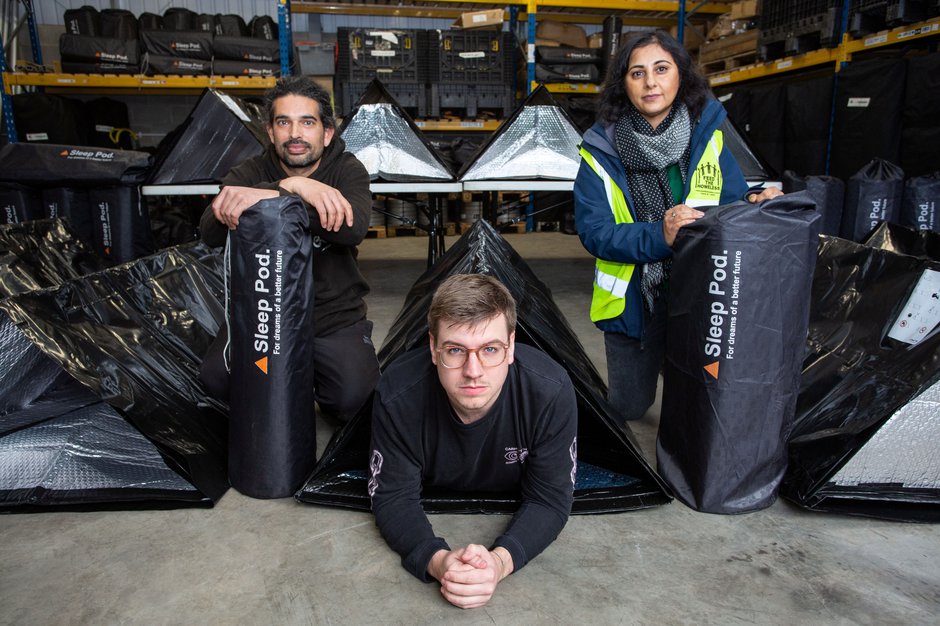 Image by: Tom Wren SWNS
Image by: Tom Wren SWNS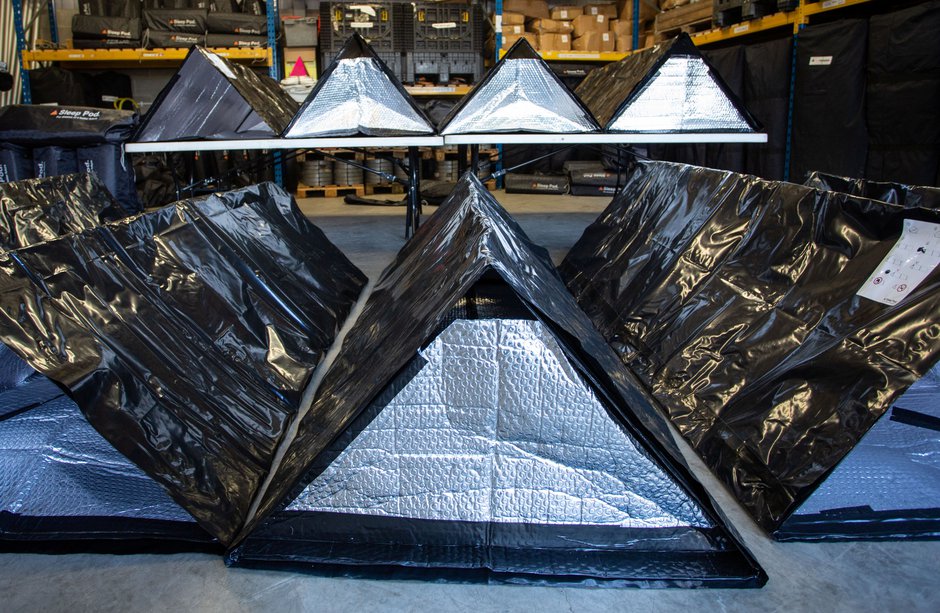 Image by: Tom Wren SWNS
Image by: Tom Wren SWNS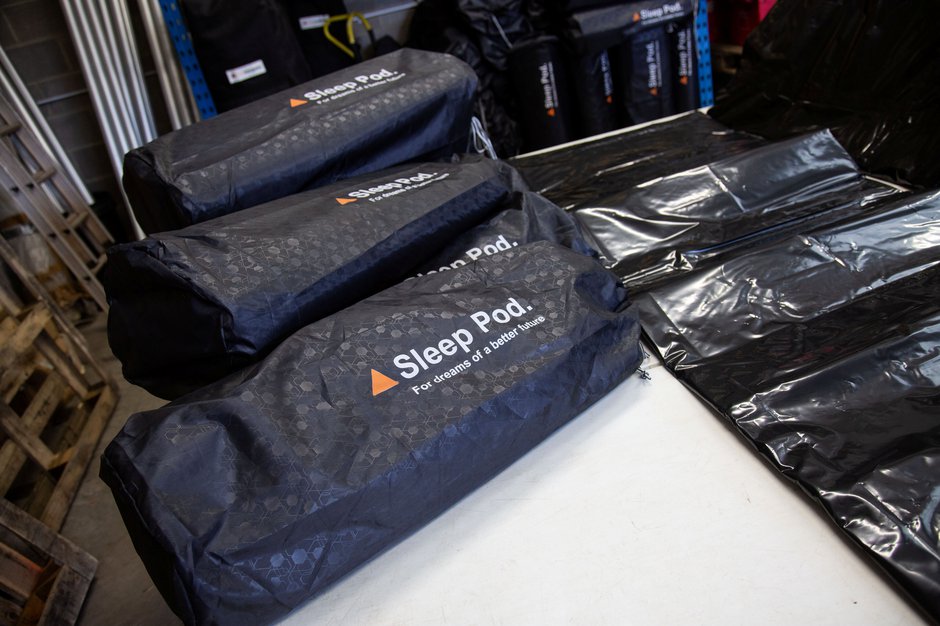 Image by: Tom Wren SWNS
Image by: Tom Wren SWNS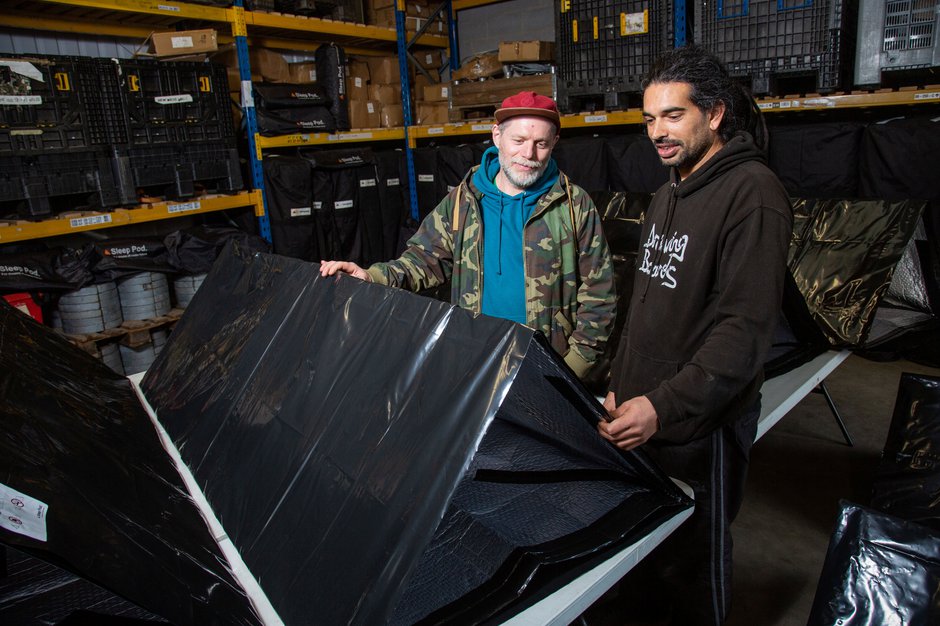 Image by: Tom Wren SWNS
Image by: Tom Wren SWNS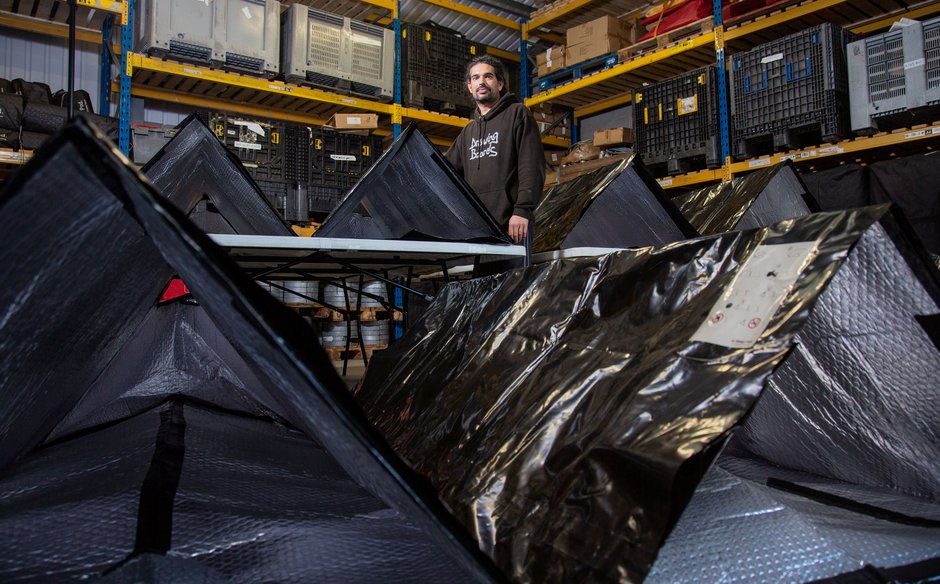 Image by: Tom Wren SWNS
Image by: Tom Wren SWNS
Joby Andrews, director of Refresh the West who are involved in the project, said: "This is a truly Bristol collaboration of people who recognise there is a homeless crisis in our city and have come together with an emergency measure to stop people dying on the streets this Christmas.
"Give a S*** Xmas has stepped in at the last minute to help us raise the extra funds we needed to get the 400 sleep pods down here from where they are made in Birmingham, so we are particularly grateful to them.
"We really need people now to come and help us build the pods and get them out to people who have nowhere else to go over the festive period."
Tom Friend, from Give A S*** Xmas, said: "We’ve been overwhelmed by the response to this year’s gig – there is so much support from the local community in helping people who have nowhere to live and we all have a role to play.
"In particular, where people cannot access a safe night’s respite this is particularly desperate
"When we heard about the drive to bring 400 Sleep Pods to Bristol, we knew we had to support it alongside our other front line charities and hope as many people can get involved in the build as possible."
People are asked to email [email protected] to volunteer.







